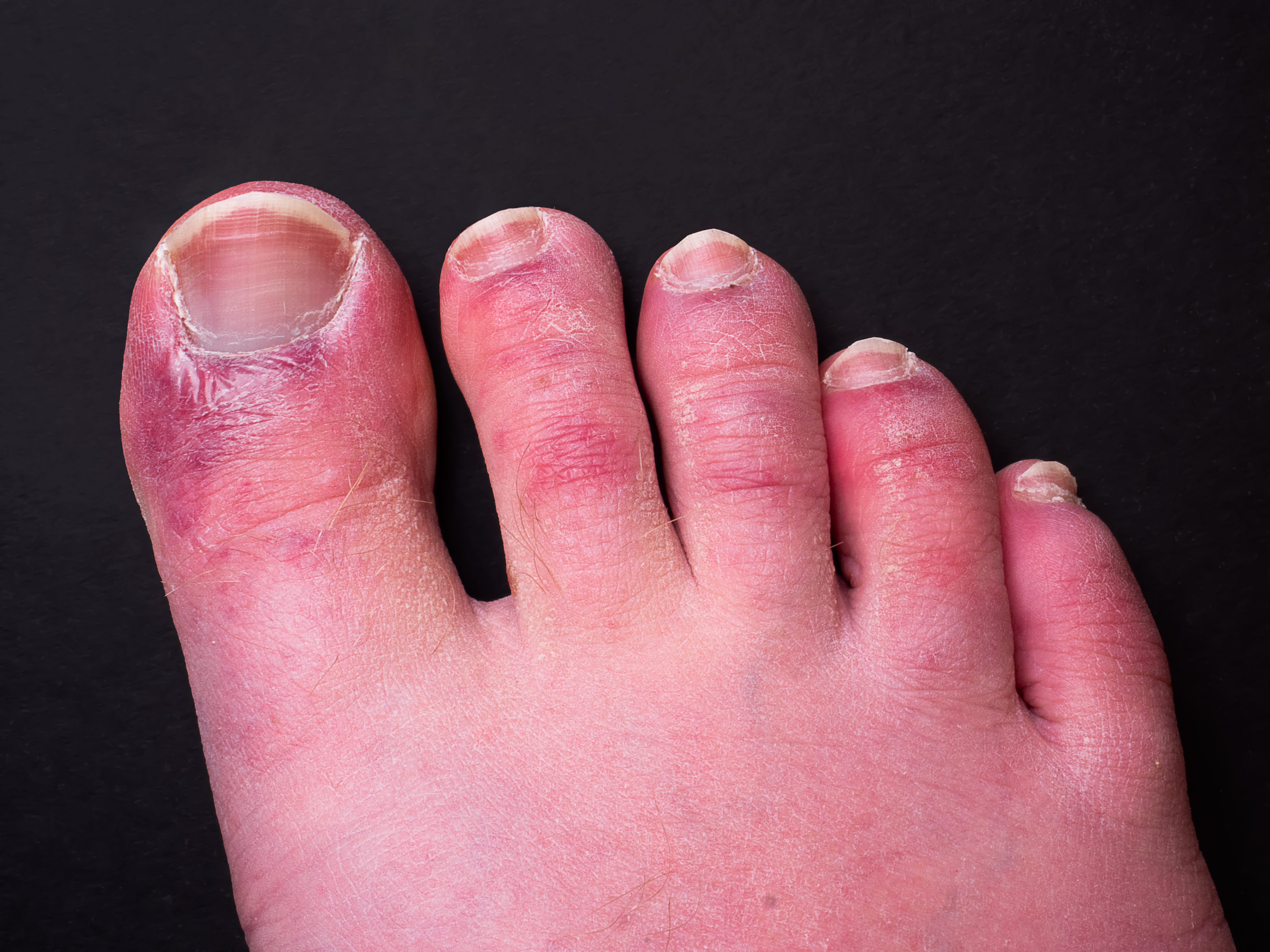What are 'Covid toes' and how are they affecting kids?


Among the more obscure symptoms of coronavirus are 'Covid toes', a condition people have reported in their feet that sees toes change colour, swell or become painful.
Covid toes have puzzled medical experts and dermatologists for months, especially as more than any other age group, it seems to be a common coronavirus symptom in kids.
So what are Covid toes and what effect are they having on children around the world?
What are Covid toes?
'Covid toes' is the name given to the condition developed by those who have had coronavirus, where their toes are red and discoloured, sore and itchy, often with no other symptoms that would suggest they'd been unwell with Covid-19.
One of the many skin conditions associated with Covid-19, Covid toes is a condition very similar to chilblains. The NHS describes chilblains as: 'small, itchy, red patches that can appear after you have been in the cold.'
'The swelling and discolouration can begin on one or several toes or fingers,' says Dr Amy Paller, FAAD and Chair of Dermatology at Northwestern Feinberg School of Medicine. 'At first, you might see a bright red colour that gradually turns to purple. COVID toes can also begin with a purplish colour.'
'Along with the swelling and discolouration, COVID toes can also cause blisters, itch, or pain. Some people develop painful raised bumps or areas of rough skin. Others may see a small amount of pus under their skin.'
Parenting advice, hot topics, best buys and family finance tips delivered straight to your inbox.

Although the condition's direct link to Covid-19 isn't yet confirmed, findings from a study from Spain published in the British Journal of Dermatology give the best evidence that the two are related. The researchers looked at children with the condition by taking a small sample from the toes to look at under a special microscope, capable of seeing the virus. They discovered tiny coronavirus particles within the blood vessels of the children's feel, confirming their findings later with a separate test.
From this, the researchers concluded that although the appearance of the condition was very similar to standard chilblains, the presence of the coronavirus particles in the feet and toes supports the link clearly and the damage caused by the virus in this area could be responsible for the redness and soreness in the toes.
As of January 2021, Covid toes is not listed as an official symptom of Covid-19 in children. This is because it tends to be an after-effect of the virus rather than an active symptom of the live virus.
What to do if your child gets Covid toes
If you think your child may have developed Covid toes, do not worry. Just like chilbalins, they usually clear up on their own. Dr Amy Paller, who is also a board-certified paediatric dermatologist, says that they tend to last only for about 10 to 14 days in most cases.
GP and medical advisor for Doctor 4 U, Dr Daniel Cichi, says about Covid toes: "They’re not usually serious and they can go away on their own. They can look unpleasant and may alarm some people, but fortunately, it seems that most cases of COVID-19 with this particular symptom are experiencing a mild form of the virus and these lesions are a sign of a normal healthy immune reaction to the virus."

Rashes and skin discolouration is a frequent side effect of many other infections, particularly ones that are viral respiratory infections.
'Rashes are often caused by skin irritation, such as an allergic reaction or a sting, or a virus like chicken pox or measles.' NHS advice says, 'It’s very common for babies and children to develop rashes and they are usually harmless and nothing to worry about, clearing up on their own in just a few days.'
Most skin rashes aren't a sign of anything severe and fade in a matter of days.
However, if your child has a rash that is reddish-brown, spotty and starts from behind the ears, spreading to the head, neck, legs and rest of the body, this could be a sign of measles and you should seek medical help.
It's also important to immediately seek medical help if the child has a pale, blotchy skin rash or a rash of purple or red spots that doesn't fade when you roll a glass over it as this is a sign of meningitis.
How do you treat Covid toes?
The general advice for treating Covid toes is to reduce the pain or itching from the condition as it will go away on its own in time.
"With the evidence available, Covid toes are not a particularly worrying sign alone and may resolve by themselves, or with mild steroid cream to reduce the inflammation." Dr Ravina Bhanot, who has been working on Covid-19 wards in hospitals throughout the pandemic, says.
"If symptoms are worsening, consult with a dermatologist. In addition, a child with respiratory symptoms such as shortness of breath should have a thorough examination. “
Naturally, Dr Chichi adds, "There will be ongoing research into this and you shouldn’t assume you have the virus if you have these lesions on your toes, but at the same time, you shouldn’t go to hospitals or GP surgeries in case you do have COVID-19 and could possibly spread it to other people.
"Instead, you can try to treat the lesions at home and get a Covid test. You can take paracetamol or ibuprofen to ease any pain or swelling, avoid being in cold temperatures and keep warm but don’t put your feet and toes in direct heat and try not to scratch the area.
"Avoid doing anything that can affect the blood circulation in your fingers and toes such as smoking. Contact your GP if the lesions do not clear on their own, you have a high temperature, or there is pus coming from the lesions, or if you have diabetes as foot problems can become serious if you are diabetic."
Much like the other symptoms of coronavirus, we haven't had enough data for long enough to truly understand the causes and longevity of Covid toes, so if you're unsure, it's always best to call your GP.

Grace Walsh is a health and wellbeing writer, working across the subjects of family, relationships, and LGBT topics, as well as sleep and mental health. A digital journalist with over six years experience as a writer and editor for UK publications, Grace is currently Health Editor for womanandhome.com and has also worked with Cosmopolitan, Red, The i Paper, GoodtoKnow, and more. After graduating from the University of Warwick, she started her career writing about the complexities of sex and relationships, before combining personal hobbies with professional and writing about fitness.